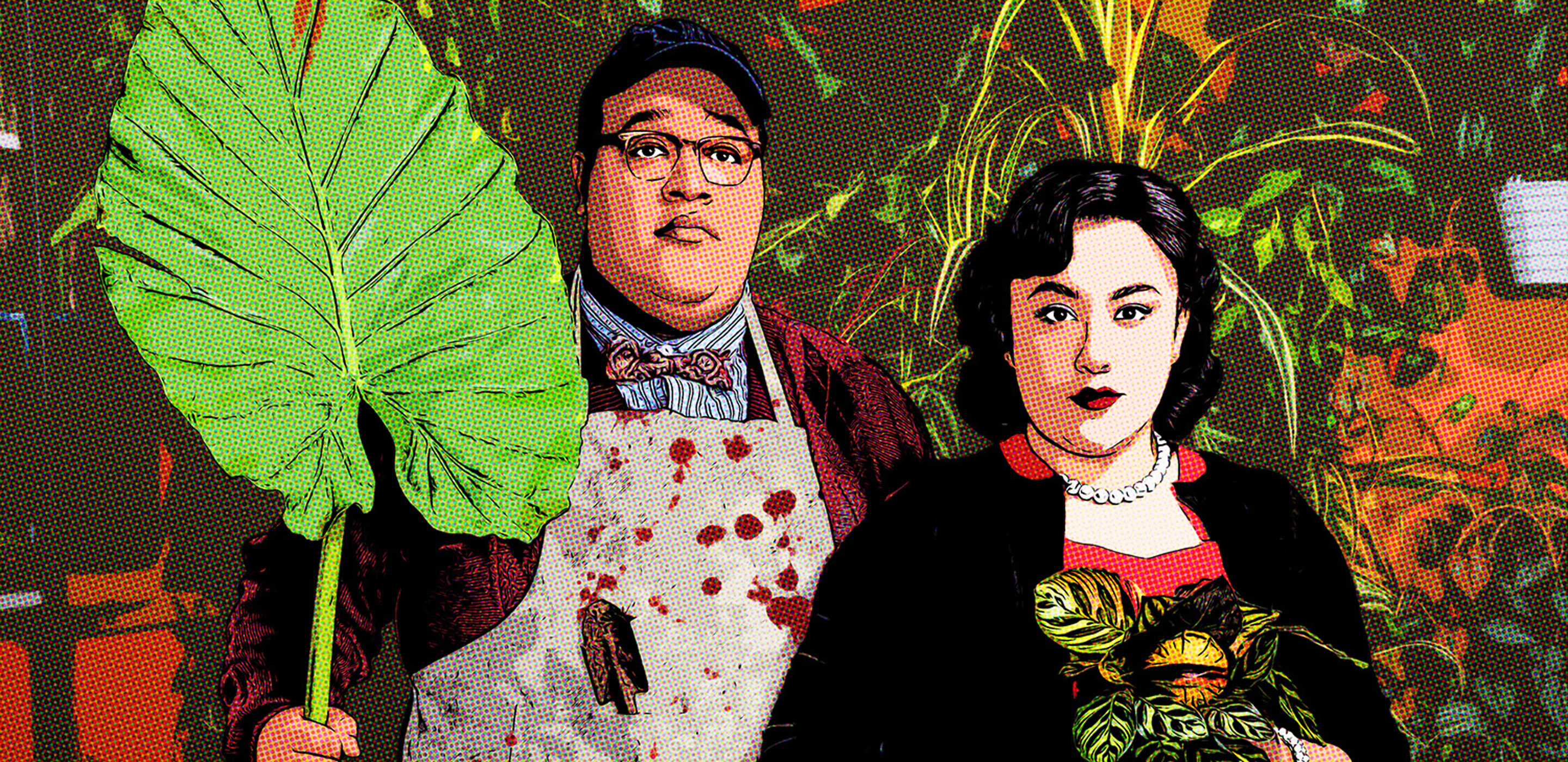
Explore the World of Carnivorous Plants with Little Shop of Horrors and the U.S. Botanic Garden
Learn about the science behind how carnivorous plants work, and how much it’s incorporated into the story of Little Shop of Horrors!
We stopped by the U.S. Botanic Garden with Derrick D. Truby, Jr. and Chani Wereley, our stars of Little Shop of Horrors, to learn about the science behind carnivorous plants. How much does the show take inspiration from the real world of carnivorous plants?
Audrey II vs. Venus Flytrap
Audrey II is one of a kind, but did you know that she is based off a real Venus flytrap?
- In Little Shop of Horrors, Audrey II has a mouth. Venus flytraps do look like they have lots of mouths in real life!
- While Audrey II is a human-devouring carnivorous plant, real Venus flytraps can’t actually hurt people! In particular: The vicious looking hairs on the outside of them are actually very soft.
- Audrey II and Venus flytraps both eat prey. In a real Venus flytrap, the leaves are composed of two sides, each with three trigger hairs. Each of the hairs need to be triggered in 15 seconds in order for the trap to snap shut. Afterwards, the hairs need to be continually triggered for quite a while in order for the leaves to seal shut and start releasing digestive enzymes. The prey (usually insects, not normally a finger) will be completely digestive except for, sometimes, the exoskeleton of the insect.
Your Guide to Carnivorous Plants
We explored the various other kinds of carnivorous plants that inspired Audrey II beyond Venus flytraps. Explore the world of carnivorous plants:
- Venus flytraps (Dionaea muscipula): They are native to the United States and grow between North and South Carolina.
- Cape sundew (Drosera capensis): From South Africa, these plants have bright leaves and sticky hairs, which attract insects to the leaves. The leaves will wrap around the insects, which are digested on the leaves.
- Australian pitcher plant (Cephalotus follicularis): These look a lot like Audrey II, because of their little, tiny teeth inside of the leaves!
- Mexican butterworts (Pinguicula spp.): These carnivorous succulents use their sticky leaves to catch small insects, who get digested on the leaves. They have little flowers that get pollinated by hummingbirds.
Digesting Human Flesh
In Little Shop of Horrors, Audrey II digests human flesh. And in real life, carnivorous plants can actually digest flesh! Let’s find out how:
Most carnivorous plants eat insects, but there are known instances of being able to capture and digest small animals like mice, rats and even frogs.
North American pitcher plants called sarracenia have beautiful colors and sweet-smelling leaves that attract insects down into their leaves. They have downward-pointing hairs and waxy surfaces that don’t allow the insects to escape. When we cut them open, we see they are filled with digesting insects.
(It’s not the most pleasant smell. Chani can attest.)
Grow For Me!
Venus flytraps are commonly available carnivorous plants, and they’re extremely rewarding to grow. Singing to them might be fun, but here are three tips that will help you to grow your Venus flytraps:
- Unlike what the song states, giving them plant food is actually detrimental to the health of a Venus flytrap. They’re adaptive to environments with very little nutrients, so they’re not used to getting plant food.
- They love water! Make sure your Venus flytrap is always sitting in a tray of reverse osmosis, rain or distilled water.
- They love sun! If you can find a spot for them outdoors where they can get full sun and can catch their own food, that would be best. But if you can’t, a spot on a sunny windowsill in your apartment or home or under grill lights would be very helpful.
Ready to see our Audrey II in action? Come see Little Shop of Horrors at Ford’s Theatre, running March 15-May 18, 2024. Get tickets here.
Visit the U.S. Botanic Garden! Thank you to Devin Dotson and Zack Leibovitch for their contributions to these educational videos. Learn more and get tickets here.
Daniella Ignacio is the former Communications Manager at Ford’s Theatre.

